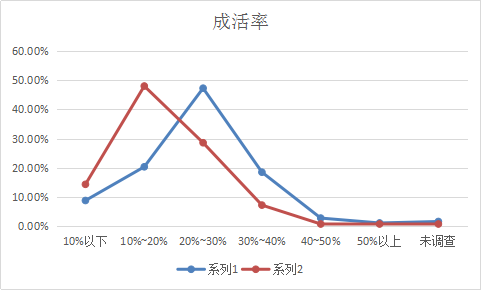"Knowing from a distance is not snow, it is for the fragrance of darkness." This is a poem that the poet used plum blossoms to express his aspirations, to show his noble sentiments, such as keeping oneself clean and moisturizing things silently. Today I use it to describe our new species of river crab "Photosynthesis 1" No". When it comes to "Guanghe No. 1", everyone knows more or less, and knows that it is the first new species of river crab in China. A new breed of ardent hope... So, what are the advantages of "Photosynthesis No. 1"? And why do you use "distant knowledge is not snow, but there is a dark fragrance" to describe it? Let me answer this question with the results of the large-scale promotion of "Guanghe No. 1" in Panjin in 2016.
At the end of 2015, the company made a decision to promote the new variety of "Guanghe No. 1" on a large scale based on the comparison of the results of the small-scale breeding of "Guanghe No. 1" in the past three years. In 2016, we sold a total of 25,505 catties of contracted seedlings, with a total of 750 farmers and a breeding area of about 76,000 mu, of which "Guanghe No. 1" was 20,497.5 catties, accounting for 80.37% of the total sales volume. Large-scale aquaculture promotion. After 6 months of breeding, we conducted a return visit to 740 of them, and based on the results of the return visit, we compared the breeding yield and survival rate of "Photosynthetic No. 1" with ordinary seedlings.

The blue line in the comparison chart represents "Photosynthesis No. 1", and the red line represents common seedlings; the vertical axis of the chart is the percentage, indicating the proportion of "this situation" to the total; the horizontal axis is the yield and survival of catty seedlings Rate. From the chart, we can see: whether it is "Photosynthesis No. 1" or common seedlings, their fold-line trends are basically the same, which is also in line with our low-yield and super-high yields in the actual breeding process. In the case of a large proportion; let's look at the broken line of the stable production part. Whether it is the yield of catty seedlings or the survival rate, the peak value of "Photosynthesis No. 1" exceeds that of ordinary seedlings by one segment. The peak yield of jin seedlings of "Guanghe No. 1" appeared in the two sub-ranges of "150-200" and "200-250", accounting for 68.13% of the total; the peak survival rate appeared in "20%-30%", accounting for the total 47.32% of the amount. The peak yield of common seedlings appeared in the two sub-ranges of "100-150" and "150-200", accounting for 62.22% of the total; the peak survival rate appeared in "10%-20%", accounting for the total of 48.05%. It can be said that in the large-scale breeding competition of "Photosynthesis No. 1" VS "Ordinary Seedlings", "Photosynthetic No.1" completely wins the "Ordinary Seedlings"!
Here I want to popularize a common sense for everyone. Based on everyone's ardent hope for "Photosynthesis No. 1", we usually have the view that "as long as it is "Photosynthetic No. 1", its output and survival rate will be high." This view. This view is generally correct in terms of the origin of germplasm, but we must understand that aquaculture is a systematic project, and seed is only an important part of this project. Under the breeding mode, the probability of obtaining high and stable yields will be increased, rather than saying that if you raise "Photosynthesis No. 1", everything will be fine, and you will be able to obtain high yields while lying at home. Good seeds have to be matched with good methods, so that we can achieve the high and stable yields we expect. This is our "Photosynthesis No. 1". It is like a plum blossom, without the coquettish color and strong fragrance, but silently releases its own fragrance, changing the development pattern of the crab industry in a silent way. Believing in science and using science and technology to guide our agricultural planting and breeding production is the only way for China's agricultural development. The breeding and promotion of "Guanghe No. 1" will surely become an important cornerstone in the scientific breeding of river crabs. As participants and promoters, we have reason to be proud and proud of our cause! Believing in yourself, in our mission, in the cause we strive for makes sense!